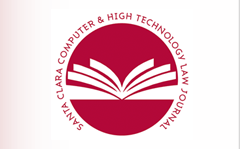Abstract
The duty to disclose material information to the United States Patent and Trademark Office under 37 C.F.R. § 1.56 (Rule 56) is a critical requirement when prosecuting a patent application in the United States. The failure to disclose information can result in a later ruling of inequitable conduct rendering the patent unenforceable. The Federal Circuit’s en banc decision in Therasense heightened the “materiality” and “intent” standards for finding inequitable conduct. However, there has been much uncertainty in the patent community regarding the future of the duty of disclosure under Rule 56. The majority in Therasense theorized that curing the “plague” of inequitable conduct would solve the over-disclosure problem faced by the Patent Office. Others, including the dissent in Therasense, argue that without the threat of inequitable conduct, patent applicants and practitioners will ignore their duty to disclose and the information gap between the Patent Office and applicants will widen; this will result in further impaired patent quality. The supplemental examination provision in the America Invents Act (AIA), a legislative cure for the proliferation of inequitable conduct charges, has heightened the concern among critics that information submission to the Patent Office will dwindle.
The Therasense Court’s answer to the over-disclosure problem and the concerns raised by critics are premised on the notion that inequitable conduct and the duty of disclosure always go in tandem. However, inequitable conduct and the duty of disclosure are not inseparably tied; and, changes in the inequitable conduct landscape may not have a significant effect on information disclosure practice before the Patent Office. First, despite the tightening of the inequitable conduct standard, information submission to the Patent Office will likely not decrease from the pre-Therasense level. This is because there are many other incentives within the patent system for applicants and practitioners to continue to err on the side of overdisclosure. Second, supplemental examination will not sound the death knell for the duty of disclosure. This is because patentees are not likely to use this provision to purge willful omissions or misrepresentations from the examination record. And third, overdisclosure is likely to remain a problem for the Patent Office and needs to be addressed in other ways. This Article concludes with suggestions for the Patent Office to consider on how to rein in overdisclosure, while encouraging applicants and practitioners to be forthcoming with information relevant to patent examination.
Recommended Citation
Arpita Bhattacharyya and Michael R. McGurk,
IDS Practice After Therasense and the AIA: Decoupling the Link Between Information Disclosure and Inequitable Conduct,
29 Santa Clara High Tech. L.J. 605
(2013).
Available at: https://digitalcommons.law.scu.edu/chtlj/vol29/iss4/2
